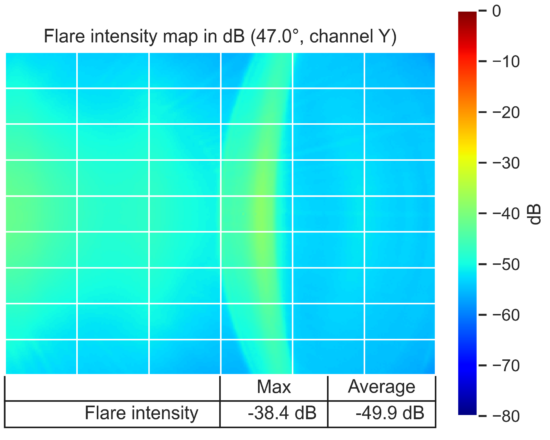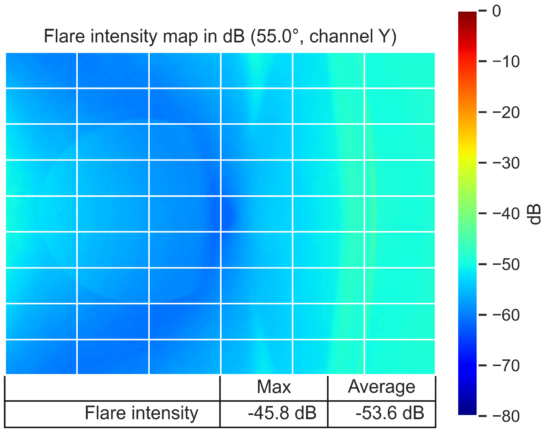In recent years, smartphone cameras have been offering impressive photography capabilities, rivaling traditional cameras in many aspects. As people rely more and more on their smartphones to capture everyday moments, understanding the nuances of smartphone photography becomes increasingly important.
One such nuance is lens flare, a scattered light that creates various visual artifacts in the image. While lens flare can sometimes add a creative touch to photos and videos, it often results in unwanted effects that can diminish the overall quality of the image.
Understanding and managing lens flare is crucial for any mobile photographer who is looking to improve his smartphone photography. By learning how this phenomenon occurs and how to control it, photographers can ensure that their images maintain clarity, contrast, good dynamic range, and color accuracy. Manufacturers, meanwhile, need to know how to measure, limit, and control the occurrence of flare during the design and development process of the smartphone camera.
What is lens flare?
Lens flare is a phenomenon that occurs when a bright light source, such as the sun or an artificial light, enters the camera lens and scatters in various shapes, sizes, and patterns in the image.
This scattering of light can result in different types of flare, including ghosting and veiling glare. Ghosting appears as multiple, often circular, bright spots or shapes in the image, caused by reflections between the lens elements. Veiling glare, on the other hand, looks like a haze over the image, with low contrast across the image, reducing overall clarity.
Lens flare can range from artistic, dreamy effects to distracting artifacts that degrade image quality, which is the kind of flare DXOMARK studies. Understanding these types of flare helps smartphone photographers manage or creatively use them to enhance their photos.
Causes of lens flare in smartphone cameras
Light sources such as direct sunlight and strong artificial lights are the primary culprits in the presence of flare in a photo. Their interaction with the lens elements produces artifacts you would not see with your bare eyes. Scratches or dust, or even fingerprints on the lens are examples of interactions, but they can occur also when lens elements or infrared filters are not perfectly aligned.
The design and coatings of the lens play a crucial role in managing these effects. High-quality lenses often feature advanced coatings intended to reduce reflections and improve light transmission, thereby minimizing flare. However, even with these coatings, internal reflections within the camera module, including those of the sensor, can still contribute to flare, even increasing it. These internal reflections can create unwanted artifacts and reduce overall image clarity.
Effects of lens flare on photos
Lens flare can have both positive and negative effects on photographs. On the positive side, flare can be used creatively to add an artistic touch to images. Photographers often exploit flare to create dreamy, ethereal effects or to emphasize the warmth and intensity of a light source, adding a sense of drama and atmosphere to their shots.
However, the negative consequences of flare are reductions in contrast, color saturation, and overall image clarity. This can result in photos that appear washed out or hazy, detracting from the subject’s details and vibrancy. For instance, a landscape photo taken with the sun directly in the frame might show beautiful, artistic flare patterns, but the image might also lack sharpness and have muted colors. Comparing photos with and without flare highlights these differences, showing how flare can both enhance and detract from the visual impact of an image.
As smartphone image quality continues to push the limit of high dynamic range capture with (multi-frame) processing that aims to enhance shadows and darktone contrasts, it can also make the flare effects more visible, making it more important than ever to reduce flare at the source.
That is why flare remains a key challenge even for the most advanced cameras and why manufacturers are trying to overcome this defect as effectively as possible.
Analyzing flare the DXOMARK way
DXOMARK specializes in measuring and analyzing this image phenomenon thanks to its flare bench — a dedicated laboratory setup just for flare. This equipment can generate sun-like flare images by incorporating a bright light source, close in apparent size and color temperature to the sun. This lab provides reliable metrics on flare based on real-use cases, such as specific measurements on the flare’s intensity based on processing the RAW images taken on the device being tested.
We recently tested several of the latest flagships released from the top brands, by measuring single frame RAW files with very limited processing. We observed how each device managed the light source that was either in the lens’s field of view or out of the field of view, and at various angles. We also evaluated light sources that were collimated –with parallel beams of light– and non-collimated — with divergent beams.
Our study focused on the image quality of the latest flagship devices with measurements of the image degradation caused by flare. For comprehensive results, our image quality engineers evaluated the following devices in the lab and out in the field:
• Oppo Find X8 Pro
• Vivo X200 Pro
• Xiaomi 15 Pro
• Huawei Pura 70 Ultra
• Apple iPhone 16 Pro Max
The perceptual study on flare was conducted in the following manner:
- Outdoors, in various light conditions, including the sun in the field of view, a strong or subtle backlight, and a powerful artificial light source placed outside the field of view but toward the camera.
- Indoors, with a strong to low-intensity diffused light placed outside the field of view.
Results
Flare is nothing new. Every smartphone camera produces flare to some extent, and we aimed to study the conditions and intensity of the flare produced from these devices. Our results clearly showed that some flagships were more prone to flare than others, some with very distinct patterns, and we were also able to determine the precise angles that would generate the flare.
Outdoors in natural light, with no additional light source:
Indoors:
To further test flare behavior, we also put these devices through unusual and extremely challenging cases not normally encountered in the real world by shining a powerful artificial light source, such as in the following indoor scene:
With a source of light, such as a flashlight, sunlight, or city lights, flare was quite noticeable. In this outdoor example, we also placed a powerful artificial light source outside the field of view and toward the camera. The latest Vivo and Oppo flagships have visible flare with flare slightly more visible on the Oppo.
In the following outdoor examples, a powerful artificial light source, a torch light, was used outside the field of view and has generated haze flare in the image.
The measurements and analyses also demonstrated how flare affected an image of a high dynamic range scene. Flare, particularly from strong sunlight or city lights, can limit a device’s HDR capabilities by degrading the raw information that gets captured.
In this example, for instance:
Results from the laboratory provide further details about each device’s handling of flare.
The following graph shows the presence and intensity of flare produced by the latest flagships in regards to the angle of the light source to the lens in or out of the field of view.
Flare intensity is the ratio between the average in the image of the unwanted signal (i.e. outside of the light source) and the normalized signal of the source. This ratio is expressed in decibels (dB). Flare readings of less than -60 dB will not be visible in an image and will have no impact on image quality. However, as flare intensity rises above -60 dB, it could become more visible in the image (depending on the light conditions when the photo was taken.)
Flare readings of more than -40 dB and above indicate significant image quality degradation.
In the following graph, we can see that when the light source is in the camera’s field of view and at a 40 to 45 degree angle to the lens, flare intensity is measured considerably above -40 dB by all the flagship devices, meaning the quality of image is severely compromised.
However, where flare behavior among the flagships becomes more divergent is when the angle of the light source increases and starts moving out of the camera’s field of view.
Our measurements showed the Oppo and Vivo devices containing higher volumes of flare than the other flagships even when the light source was at higher angles and out of the camera’s field of view.
The Xiaomi 15 Pro lands between those devices and the Apple iPhone 16 Pro Max. The four devices (Apple, Xiaomi, Oppo and Vivo) will be affected by flare, especially for HDR scenes as it will degrade the quality of the darker signal.
A graphic depiction of flare
The following graphs help to scientifically illustrate the presence and intensity of flare at specific angles. In these examples, we can also see the characteristics of the flare produced.
The colored bar to right of each graph indicates the intensity of flare. For, example, the darker the blue, the less flare in the image. Using -30 db as a threshold at which flare begins to significantly degrade image quality, we can see that the intensity of the flare at 47-, 55-, and 63-degree angles, with the light source out of the field of view, never exceeded -30 decibels on these flagships. What is notable, however, is how the flare differs among these devices .
In the range between 45° and 55° angles, the Xiaomi 15 Pro’s flare was barely visible, while the Huawei Pura 70 Ultra and Apple iPhone 16 Pro Max were able to maintain their maximum flare intensity below -49 db and -46 db, respectively, and their average flare measurement below -53 db.
Between 60° and 65° Huawei showed more flare than the competition, but the impact on the quality of the final image was more limited in this range, when compared between 45° and 55° angles.
Harnessing lens flare
While a burst of flare can sometimes appear aesthetically pleasing in a photo, we have seen from the previous graphs and some of the real-life images that most of the time flare does not add much artistically to a photo because of its intrusive and random nature. In any case, whether intended or not, flare reduces the basic technical quality of an image by interfering with contrast and the collection of light.
In this regard, most smartphone lenses are also still far from producing pleasing forms of flare that can be sometimes created with professional lenses.
So what does all this mean to the average mobile photographer? While there might not be much anyone can do when it comes to lens flare, there are steps one can take to minimize flare and enhance image quality, such as avoiding shooting directly into strong light sources, adjusting camera angles, keeping lenses clean, and employing software solutions.
However, mobile photographers also shouldn’t shy away from experimenting with flare creatively, as it can add a unique artistic touch to photos. Balancing technological advancements with artistic expression is key in photography; while technology provides tools to enhance image quality, the photographer’s vision and creativity ultimately define the art.
DXOMARK is continuing to do deep dives on other pertinent aspects of smartphone photography in the latest flagships. Keep checking dxomark.com for the results of those studies that are coming soon.




























